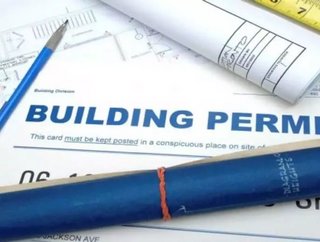Federal Buildings Promote Open Spaces, Conservation

Do you usually think of federal buildings as places to shop for fresh produce, listen to live music or enjoy a colorful art gallery? Perhaps not, but many people regularly do these things at federal properties across the country.
That's because some federal properties are open for events like farmers markets, concerts, book readings, lectures and more.
"We've had weddings, aerial dance shows on building facades, concerts, holiday markets and even an insect museum. We've seen a lot of creative uses at federal buildings," says Frank Giblin , director of the Good Neighbor Program at the U.S. General Services Administration (GSA).
The program promotes public use of federal properties and works with federal agencies and local communities to locate federal buildings in places that minimize the environmental impacts of commuting and offer easier access to a wide range of employees, including those from low income areas.
Federal Buildings as Community Spaces
Nonprofit organizations and members of the public can use many of the country's 2,000 federal buildings for community events for low or no cost.
Some of these buildings might include a historic site such as the James R. Browning
U.S. Courthouse in San Francisco or a local Social Security or Veterans Affairs office. Others include lesser-known office buildings, warehouses, and laboratories.
Events that last fewer than 30 days are often free unless the building needs to pay for additional costs such as security, heating, air conditioning and trash removal. Long-term, commercial use is also available at some federal buildings for businesses like restaurants and stores.
Federal Buildings Help Protect the Environment
GSA works closely with local communities to make sure that, when possible, federal buildings are designed, built, renovated and managed in a way that protects the environment. GSA's Good Neighbor program works to promote the location of federal buildings in neighborhoods that minimize commute times and distances for employees by choosing locations that are easily accessible by public transportation, bicycles and pedestrians. Shorter commutes and less need to rely on employees driving to work protect the environment by reducing traffic congestion and improving air quality.
Through the Good Neighbor Program, GSA works to make federal buildings more open to the public and to create policies that promote the use of federal properties while protecting the environment.
"These are public buildings," says Giblin, "And we want to make sure that the actions we take as an agency keep them as public as possible and provide great benefits to communities."
How to Use a Federal Building
Because federal properties vary in size, functionality, security and location, it can be tricky to figure out which ones are best for public use. You can find that out by contacting the on-site property manager of the building you're interested in. The process for obtaining a permit is easy and usually includes:
-
Submitting Form 3453 or Form 1582 to get a permit or license
-
Filling out a page with basic information and copies of material that will be displayed or distributed during the event
-
If approved, you will get a permit within 10 days of the date you applied
Where to Learn More
Visit GSA.gov for more information on the Good Neighbor Program or contact the federal building manager closest to you if you are considering organizing an event on federal property.
Also, you may contact your local representatives if you have issues with federal real estate. You can visit an inventory of properties owned or leased by GSA and find information on how to contact the agency's regional staff.
SOURCE GobiernoUSA.gov/USA.gov
Read More in Energy Digital's December/January Issue
DOWNLOAD THE ENERGY DIGITAL IPAD APP






